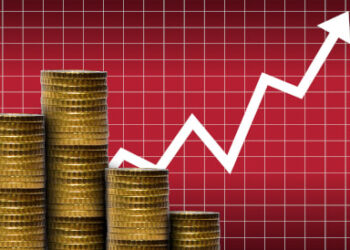The payout to shareholders is set to dwarf the $21.6 billion paid out at the close of the financial year 2020, when many companies reacted to the COVID-19 crisis by cutting spending or abandoning dividend payments.
By contrast, FY21 has proven to be a booming year for the flagship Australian exchange, giving ASX companies more flexibility to reward shareholders.
“More companies lifted profits and trimmed losses,” CommSec said in its report.
“As a result, cash at hand is now at lofty levels.”
According to the brokerage, the number of companies issuing a dividend (81 per cent) was just shy of the long-term average (85 per cent). However, those paying out were more generous than typically seen – aggregate dividends rose by 70 per cent when compared to the previous year, with almost 60 per cent of companies increasing dividends.
Only 13 per cent of firms cut dividends, while 9 per cent left dividends stable.
Sectors paying out the most generous dividends were materials, financials, industrials and consumer discretionary.
“A feature of the August reporting season was the abnormally high dividend payouts of the mining sector, supported by record-breaking commodity prices and profits,” CommSec said in its report.
FMG was one such example of this phenomenon, paying out a dividend of more than $3 per share on 6 September.
The mining giant lost 11 per cent of its value in the process.
According to CommSec, the key period for dividend payments began on Monday, with the week ended 14 September expected to be a notable high – $15.2 billion is anticipated to be paid out to investors.
While hotly anticipated by holders of ASX companies, the volume of dividends yet to be paid to investors is not all good news for the market. Dividends already paid have contributed to the exchange’s current slump – having shed 1.3 per cent in the month to date.
Emmanuel Datt, chief investment officer at Datt capital, spoke to InvestorDaily on the market’s current dip. He said this follows natural patterns and that he expects further falls – dividends have historically left the exchange weak in September.
“September, on the ASX, is generally a weaker seasonal month. Incidentally, the last two weeks of September major companies tend to pay dividend during this period; which sets the scene for October which is generally a seasonally strong month,” he said.
Despite this, the exchange is in danger of shedding more than it would in its typical period of weakness, as more companies jettison record amounts of value.
According to CommSec, a pullback influenced by such payouts should be seen as healthy when considering the level of growth in ASX-listed companies since last year’s dividend payouts.
“We’ve had an 11 straight month winning streak for our market,” the brokerage said on its end-of-day market podcast on Monday.
“This is the type of winning streak you don’t see happen very often.”
The last time the ASX saw such consistent growth was in the early 1940s.
It should also be noted that the ASX’s tough month has been also largely impacted by other factors, including a slowdown in global growth, alongside plummeting iron ore prices impacting Australian miners.







